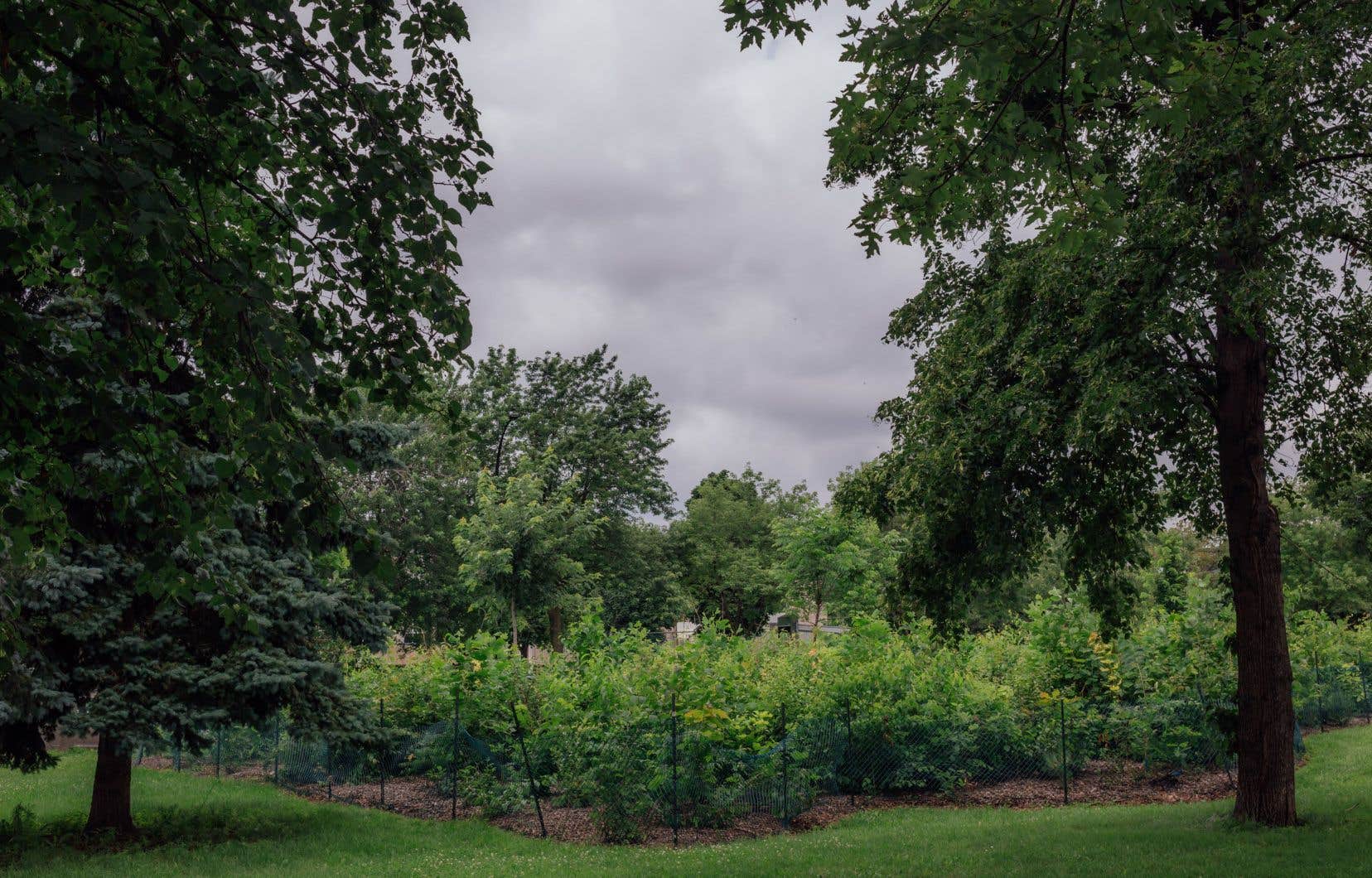While the great forests of the north are burning, microforests are multiplying in the cities of southern Quebec. Montreal alone will soon have fourteen on its territory.
Basically, microforests are greening projects like any other aimed at bringing green back into the city and combating heat islands. What sets them apart is their density.
Thus, in a microforest of 400 m2, more than 1000 trees can be planted (approximately three trees per square meter). “It’s like planting a kind of jungle,” summarizes Simon Côté, coordinator of the Arbre-Évolution cooperative, which specializes in this kind of project and supports the cities that carry it out.
Placing competing trees in a small space causes them to grow faster. Really faster. For example, in the two micro-forests of Parc du Pélican, in the borough of Rosemont—La Petite-Patrie, some trees are three and a half meters high after only two years. “When we planted them, they were 60 centimeters. It’s really crazy. Already, after two years, we can see that it works. »
Of Japanese inspiration, the concept was invented by the botanist Akira Miyawaki and is experiencing a certain enthusiasm in France, in particular.
The Parc du Pélican microforest is the first to be created in Quebec. “We had never heard of this before 2021,” says Simon Côté. “Two employees of the borough of Rosemont called us to ask us questions about it. It started like that. »
At first, he continues, “we found it almost heretical”. “In forestry, you don’t plant a maple, an oak and a pine in a square meter. The conventional approach is to plant a tree every three or four meters in order to allow it to grow large enough to capture as much carbon as possible in its lifetime. »
Three years later, Arbre-Évolution is working on a plethora of projects. “We did one in Repentigny, three or four in Montreal, one in Candiac and there, we are preparing at least three others for the fall,” explains Mr. Côté.
Not necessarily expensive
Apart from Montreal, Candiac is one of the few cities to have tried the experiment. “We are looking to do more. It’s really a success, ”explains Karine Lehoux, responsible for ecological transition and innovation for the municipality. ” She [la microforêt] is really beautiful. There has been impressive growth in one year. »
The Candiac microforest is 440 m2 and has 1030 trees of 18 distinct species: red pines, bur oaks, white spruces, white birches, black walnuts…
It is located in Handel Park, a very busy place that is not a heat island, suitable Mme Holly. “But that wasn’t our goal. We wanted to test first. [la formule]. It is a pilot project. »
Beyond its environmental virtues, the project thrills the municipality because of its cost, she says. About $20,000 in total, including the bill for the large number of trees planted.
Microforests can be inexpensive in terms of human resources because they are carried out within the framework of citizen mobilization activities. Arbre-Évolution has also developed a “social reforestation” program through which companies finance projects within the framework of philanthropic activities with an environmental flavor.
In Montreal, the microforests were also chosen by citizens as part of the City’s participatory budget, which granted them $1.4 million. That’s why there are so many.
The conventional approach is to plant a tree every three or four meters in order to allow it to take on sufficient dimensions to capture as much carbon as possible in its life.
The City ultimately wants to design fourteen. In addition to those of Parc du Pélican, those of Verdun (there are two) and Outremont (6) should be delivered this fall. And four others are in planning in Pierrefonds-Roxboro (3) and Montreal North.
What effect on GHGs?
Compared to other types of landscaping, microforests can be more complex to achieve, warns Simon Côté, because the grass and peat must be removed and replaced with much richer soil.
“But we don’t have to add feet and feet of dirt either. Trees still have a rather amazing rooting capacity. Sometimes you see things growing out of concrete. »
Already, early projects have taught teams some lessons. On the importance of basal mulch and forest tending, especially in the first year, to remove invasive alien species, such as buckthorn, phragmites (reed) and knotweed from Japan.
For the rest, there were not too many bad surprises. In Candiac, the place has already attracted deer, but the microforest is, in any case, protected by a fence. With, in front, explanatory panels to inform the population of its characteristics and benefits.
Benefits whose magnitude remains to be measured. Microforests are reputed to be effective in reducing greenhouse gases (GHGs), but we do not yet know to what extent, explains Simon Côté. From the outset, it is not possible to associate them with the sale of carbon credits.
“There are still things to prove. In terms of carbon sequestration, what makes the difference is the trunk. Will microforests produce trees with lots of lignin [la substance qui donne au bois sa consistance] ? That remains to be seen. »
According to Mr. Côté and Mr.me Lehoux, a team from the University of Montreal and the Botanical Garden is preparing to launch a research project to clarify this.
One thing is certain, the desire to fight against GHGs partly explains the current enthusiasm for the formula in Quebec, according to Simon Côté. “The dimension of biodiversity is very important in the concept. And given that there was COP15 [sur la biodiversité] in Montreal and that major commitments have been made, I think that motivates decision-makers to create forest areas free of human intervention. »
